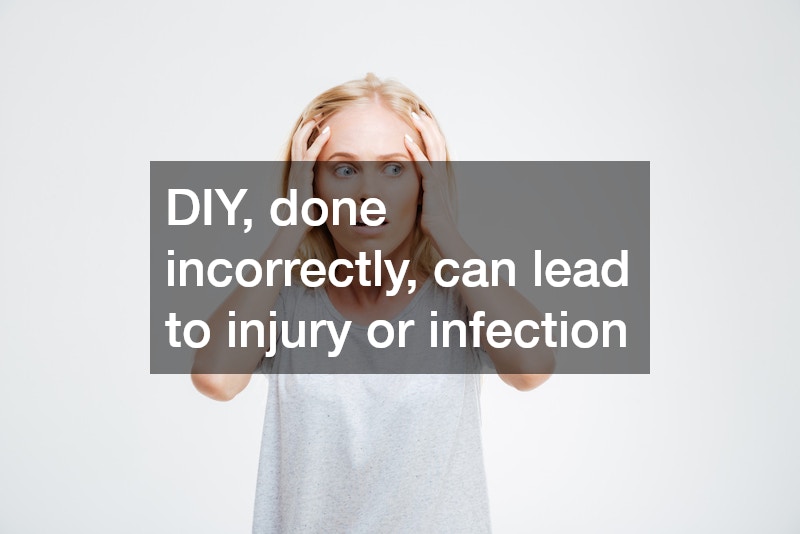

Many skincare enthusiasts are intrigued by microneedling for its potential to improve skin texture and appearance. This article delves into the intricacies of the procedure, assessing its validity and effectiveness.
What is Microneedling and How Does It Work?
The Science Behind Microneedling
Microneedling involves the use of small needles to create micro-injuries in the skin, which in turn stimulate collagen production. The increased collagen helps in regenerating skin cells, improving skin tone, and reducing signs of aging.
The science is rooted in the skin’s natural healing process, which enhances elasticity and firmness.
This treatment method has evolved with advancements in technology, making it more accessible and effective. It is frequently used to address concerns such as fine lines, acne scars, and age spots. Understanding this scientific basis provides insight into why microneedling is popular in skin care.
It is crucial, however, to recognize that microneedling may not provide uniform results for everyone. Skin type, severity of skin issues, and individual healing responses can influence outcomes significantly. Therefore, a broad understanding of its mechanism is essential for realistic expectations.
Benefits and Risks
The primary benefit of microneedling is the promotion of collagen and elastin production, leading to firmer and more youthful-looking skin. It can also enhance the absorption of skincare products, making them more effective. However, like any procedure, microneedling does come with potential risks.
These risks include infection, redness, and irritation, especially if performed improperly. Despite these concerns, many find the benefits outweigh the drawbacks, with improvements in skin texture and appearance. A balanced understanding of both sides helps in making informed decisions.
It’s important to consider that some risks, such as hyperpigmentation or allergic reactions, can affect certain individuals. Adhering to post-treatment care instructions can minimize these risks considerably. Weighing these factors helps in determining the overall value of the procedure.
Types of Microneedling Devices
Various microneedling devices have been developed to suit different skin needs and preferences. Derma rollers, for example, are simple tools that allow for home use, while more sophisticated microneedling pens offer precision for professional treatments. Each device has its own set of benefits and considerations.
Choosing the right device depends on factors like skin condition, desired outcomes, and comfort with the procedure. While derma rollers are cost-effective, pens offer depth control and penetration which may yield better results. It is important to match the device with the treatment goals.
Understanding the features of different devices will ensure optimal results and minimize risk. Proper sterilization and technique are essential regardless of the chosen tool. This section aids readers in selecting the most suitable device for their needs.
Is Microneedling Suitable for All Skin Types?
Skin Conditions That Benefit from Microneedling
Microneedling has the potential to benefit numerous skin conditions, making it a versatile treatment option. It is particularly effective for reducing acne scars, fine lines, and enlarged pores. Additionally, it has shown promise in improving overall skin tone and texture.
People with sun-damaged skin often report noticeable improvements after a series of microneedling sessions. The procedure can also help in treating stretch marks and hyperpigmentation, although individual results may vary. Its adaptability makes it a popular choice among diverse skin types.
However, not all skin types may respond similarly. Those with sensitive skin or active acne breakouts should approach microneedling with caution. Professional consultation can guide individuals towards achieving the best possible outcome for their skin condition.
Contraindications and Precautions
While microneedling can be beneficial, certain conditions make it less advisable. Individuals with open wounds, infections, or active acne should avoid this treatment to prevent further complications. Similarly, those with a history of keloid scars or certain skin disorders should exercise caution.
Pregnant or breastfeeding women are generally advised to postpone microneedling sessions. It is essential to consider underlying health conditions and any medications that might influence the skin’s healing process. These precautions are vital to ensure safety and efficacy.
To minimize risks, it’s crucial to follow pre and post-procedure care guidelines provided by professionals. Adhering to these instructions helps in achieving desired outcomes while maintaining skin health. Ensuring optimal safety will enhance the effectiveness of the treatment.
Consultation with Professionals
The importance of professional consultation cannot be overstated when considering microneedling. Dermatologists and licensed aestheticians provide valuable insights into the suitability of microneedling for individual skin types. They assess skin health and recommend tailored treatment plans for the best results.
Professional oversight ensures that the procedure is performed safely, minimizing the risk of complications. They also guide post-treatment care to optimize recovery and outcomes. Seeking expert advice is a key step in the microneedling journey.
Ultimately, understanding both the benefits and potential pitfalls of microneedling through professional guidance leads to more informed decisions. This individualized approach caters to specific needs and enhances the effectiveness of the procedure. Choosing qualified professionals helps in navigating the complexities of skin treatments.

What Results Can Be Expected From Microneedling?
Short-term and Long-term Outcomes
Microneedling results can vary, with patients often experiencing immediate improvements in skin radiance and slight reduction in pore size. With consistent sessions, long-term benefits include enhanced collagen production, firmer skin, and a reduction in wrinkles and scars. However, it’s important to set realistic expectations as outcomes depend on individual factors.
Short-term side effects may include redness and minor swelling, which typically subside within a few days. Over time, the stimulation of collagen and elastin can contribute to sustained improvements in skin texture and elasticity. A comprehensive understanding of expected results aids in measuring progress.
The cumulative effect of multiple treatments usually leads to more pronounced improvements. Long-term commitment and adherence to a professional’s advice contribute significantly to achieving the desired outcomes. Monitoring changes over the course of treatment provides insights into effectiveness and areas for adjustment.
Combining Microneedling with Other Treatments
Pairing microneedling with complementary treatments can enhance its effectiveness and provide comprehensive benefits. Procedures such as chemical peels, laser therapy, or platelet-rich plasma (PRP) can work synergistically with microneedling. This combination may target multiple skin concerns simultaneously.
For instance, using microneedling before a chemical peel can amplify the peel’s effects by allowing for deeper penetration of active ingredients. When combined with PRP, microneedling can further stimulate collagen production. Exploring these combinations opens up possibilities for more dynamic treatment plans.
Integrating different treatments must be approached cautiously and under professional supervision. The specific sequence and timing of combined treatments are crucial to their success and safety. Collaborating with experts will craft a regimen that maximizes benefits while minimizing potential risks.
Before and After: Real-Life Cases
Real-life cases provide tangible evidence of microneedling’s effects on various skin concerns. Many individuals report noticeable improvements in skin tone and texture after undergoing a series of treatments. Before-and-after photos often highlight significant reductions in acne scars, fine lines, and hyperpigmentation.
These visual accounts assist potential clients in setting realistic expectations and understanding the timeline for visible results. They showcase the diversity of outcomes possible with microneedling, influenced by variables such as skin type and treatment frequency. Anecdotal evidence complements clinical studies in painting a fuller picture of microneedling’s impact.
Despite varied results, these real-life examples emphasize the importance of a personalized approach. Consulting with professionals and sharing goals can align expectations with achievable outcomes. These narratives validate the experiences of previous clients, offering insights into the transformative potential of microneedling.
Conclusion
In conclusion, microneedling’s growing popularity is backed by its potential benefits and advancements in technology. While not a one-size-fits-all solution, its adaptability to various skin concerns makes it a valuable component of many skincare regimens. Professional consultation and tailored treatment plans are crucial for achieving optimal outcomes.
The evidence suggests that while microneedling may still be evolving, its potential in enhancing skin health is undeniable. Weighing its advantages against possible risks involves careful consideration and professional guidance. Ultimately, microneedling represents more than a beauty fad; it can be an effective tool in achieving healthier, more radiant skin.
.